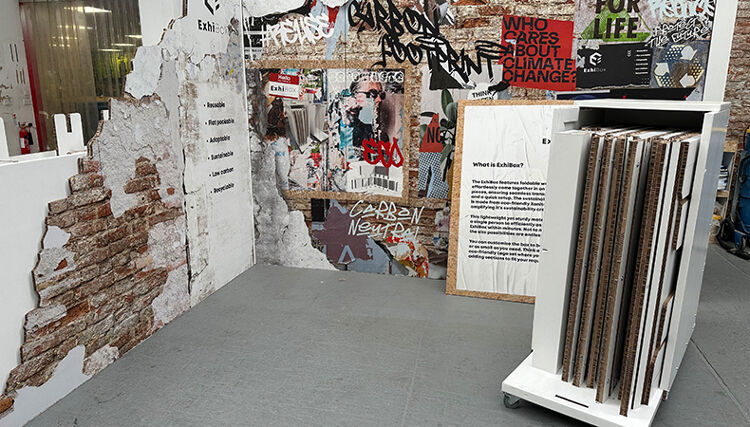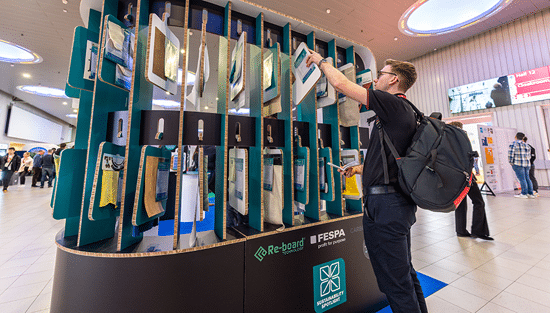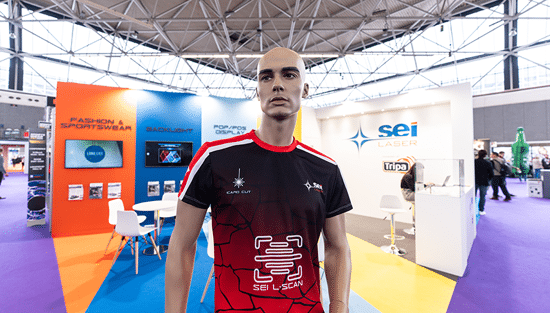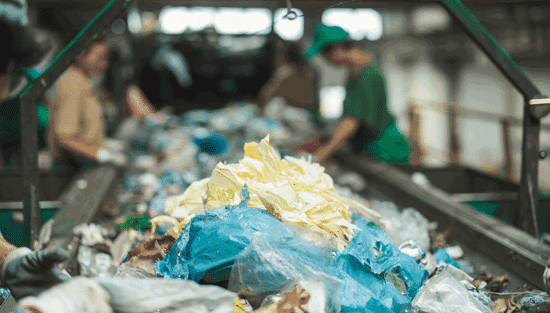After ISO 14001: Imageco and its journey to maximum sustainability

In January 2021, we spoke to Imageco Managing Director Nathan Swinson-Bullough about his company’s initial steps towards sustainability. Now, two years later, we determine how the firm’s journey in sustainability has progressed.
When we spoke to you last, one of the biggest plans you had was to achieve ISO 14001 environmental accreditation. How has progress been?
We were certified well over a year ago, so ISO 14001 has been in place for some time now and we have a second ISO 14001 audit imminently.
The reason why I was determined to achieve this accreditation is in today’s world there is a lot of greenwashing happening in many businesses. I believed we needed to receive some kind of certification to prove what we are doing and what we are trying to achieve. Also, it does offer commercial benefits when going for contracts, especially retail contracts and contracts with big brands.
What does achieving ISO 14001 entail?
When we first got in touch to seek ISO 14001 accreditation, we were already well on our sustainability journey. We had installed solar panels; I had already switched our cars to an electric vehicle; we had already done material analysis and added HP Latex. So we were well on the way with everything we could do.

The ISO assessors came and walked around the business and assessed us from top to bottom: waste management, energy audits – they carefully and thoroughly assessed every aspect. There are lots of little factors that you don’t think of, such as storing chemicals in cupboards, which almost crosses into health and safety rather than being entirely environmental. Or the racking where we keep all the materials: that was deemed too high, so we needed to put new racking in, which was a £10,000 investment. Based on that visit, the assessors then say yes or no regarding accreditation.
There is also lot of paperwork involved with achieving ISO 14001, and I’m fortunate to have a person who deals with all of that. There’s a lot of legislation that needs to be followed and you need to update the register frequently. Once you’re on it, you have to keep up with it and you do get assessed every year with audits bi-annually. This is reasonable, as it is important to be kept in check as this helps to drive that change as well.
Next year, we’ll look at achieving the quality-based ISO 9001, but I’m also considering taking it even further and going for B Corp status, although I’m not sure how easy or even if it is possible for a printer to achieve it.
You mentioned electric vehicles (EVs). The last time we spoke you said you were hoping to use EVs more – how is that developing?
I’ve been driving an EV for three years and now my business partner has one, so we are both using fully electric vehicles. However, in terms of regular transport – installations and delivery – it’s all still diesel vehicles.
But one thing we have done since the last time we spoke is having commission carbon reviews from CarbonQuota and we are now carbon measured. CarbonQuota assesses carbon-based scope 1 and scope 2 emissions, which is factory emissions and direct travel and transport. However, they don’t measure scope 3 emissions including deliveries and so on.
They produce some great graphs and presentations so that you can see exactly where your emissions are, and they create a bubble chart with suggestions of things you can do. One thing identified was that between 2021 and 2022 we reduced our carbon emissions by four tonnes.
Two years ago, you had already had solar panels installed and you were looking at other sources of renewable energy.
We added solar energy during Covid-19. We’re only 40% solar, which isn’t bad, but the reason it isn’t more is because the roof of our factory isn’t suitable for the weight of full solar panel coverage. Therefore, we’ve got almost 90 solar panels, which was a £30,000 investment. Then, in October 2022, our energy supply switched to renewable energy contracts for the remaining energy.
You also started a tree planting initiative with the Yorkshire Dales Millennium Trust. How has that developed?
I had the idea to plant a tree for every 10m2 of our one-piece recycled bottle wallpaper sold, and we’re planting more than 200 trees every year with that project.
When we got our first CarbonQuota assessment, we were able to be carbon neutral because we bought carbon credits. Those were connected to plantations in Brazil and South Africa, but we couldn’t actually see what was happening. Since then, Greta Thunberg has said carbon credits are questionable.
Therefore, the tree planting we do now is in the Yorkshire Dales where we can see it. But it doesn’t count to any kind of offsetting – we don’t measure it at all – it’s just something that we can do with our local countryside. I’ve been out there with my wife and friends to maintain the trees planted. So at least then we can see exactly what is happening and it’s on our doorstep, rather than buying credits to go somewhere that we can’t really keep track of.
It seems you’re not a fan of carbon credits – why do you think carbon offsets aren’t enough?
It’s like airlines who supposedly plant a tree for every flight – it is not enough. You have to look at the integrity of the company to see what can be achieved there first, as we have done with solar and voltage optimisation.
I believe it’s actually unfair that companies can buy their way to carbon neutrality when you should invest in your power usage or anything you can do with technology to reduce your carbon output and reduce your waste.
I think carbon offsetting is the very last thing you should do, and even then, the projects you invest in should be much more locally based.
What about waste management – how do you manage that?
Reconomy has handled our waste for some time now; everything that can be recycled is being recycled. Some of the fabrics have to go to waste-to-energy because the technology to recycle them isn’t suitable yet.
But nowadays we use Xanita board where, five years ago, it would have been smart foam or PVC going to waste-to-energy. Now we have a huge compactor and a six-tonne skip, purely for Xanita. While our Xanita consumption is going through the roof, all the waste associated with it is going to recycling.
That leads on perfectly to one of your latest innovations – the ExhiBox concept. Tell us about that.
The ExhiBox is basically a reusable, flat packable, sustainable and recyclable exhibition stand made from Xanita board (see image at top of article). I had the idea during Covid. I was looking at some display units, and I just thought: why don’t we design a flatpack exhibition stand for small organisations?
Xanita designed something initially, but it was a little bit too big. Then we managed to hire a cardboard engineer and I mentioned ExhiBox to him. He went away and designed a full exhibition stand that all folds down into a box. This was exactly what I was looking for. We’ve now branded that and we’re producing them. We are currently making ExhiBoxes for Antalis.
We create a blank shell of Xanita board and then we just reclad the front with Xanita board and magnets. You can literally take the graphics off and recycle them, then bring the stand back in a box, and then the next time you rebuild it, you fit new graphics.
We’re only just beginning to work out what can be accomplished fully with Xanita and I think you are going to see it a lot more in the exhibition and retail world.

What positive message do you have for other FESPA members?
I think sustainability is all about taking action, there are simple changes that can be made. I was on the FESPA UK Waste Accredation Course last week and it’s clear there are several straightforward steps with things like material choice and waste management – things you’re already paying for.
When I first started looking at sustainable materials for our customers, I always had a cheaper non-sustainable alternative. Now, I’m not offering that alternative; I’m just switching the company to the more sustainable product. That means our suppliers have recognised what we’re doing and have come to us with suggestions for sustainable products that are on par with what we were already paying.
There are other simple action that can be done as well. You don’t have to install thousands of pounds worth of solar panels, just switch your lights off. Upgrade your RIP software. Be more economical with waste and how you print. There is a cost to it but if you don’t make that change, you will fall behind. When I started this, it was never a business plan but over time I have started to see that sustainability is a massive part of the industry.
So being more sustainable offers enhanced business opportunities?
Absolutely. If you look at our factory now, there is Xanita board and paper-based board everywhere. Although we still accept jobs with unsustainable products because we still have to run a business, so much of what we do now uses sustainable technology. We have won two global awards for our Xanita exhibition stands, and Doc Martens has specified that the POS we produce for them for the UK and Europe is Xanita based. This is a massive area of potential.
Become a FESPA member to continue reading
To read more and access exclusive content on the Club FESPA portal, please contact your Local Association. If you are not a current member, please enquire here. If there is no FESPA Association in your country, you can join FESPA Direct. Once you become a FESPA member, you can gain access to the Club FESPA Portal.
Topics
Recent news

New sustainable materials at Sustainability Spotlight
Sustainability Spotlight returned by popular demand to FESPA Global Print Expo last month in an exhibit curated by The Good Factory.

Sportswear Pro: building ‘Brand Me’
After the success of the inaugural Sportswear Pro last month, we spoke with panellist and personalisation expert James Lawrence-Jones about the most exciting revelations at the event.

